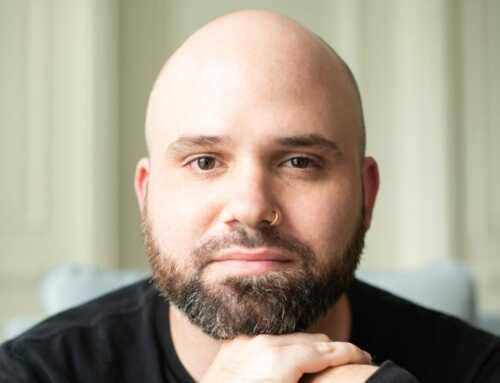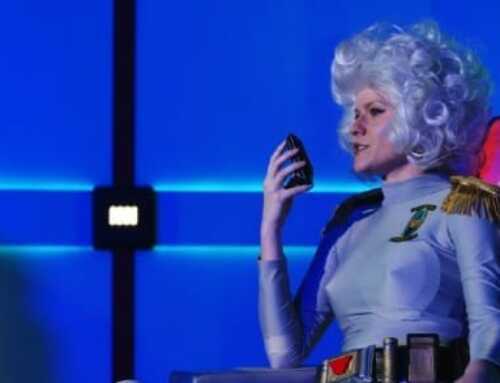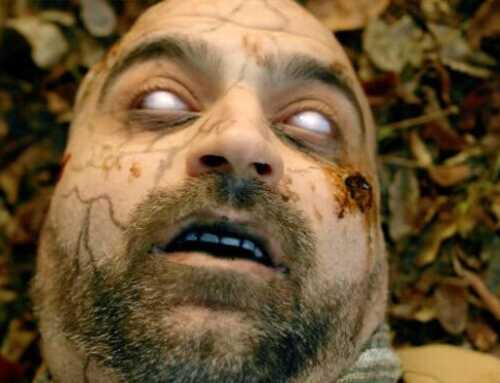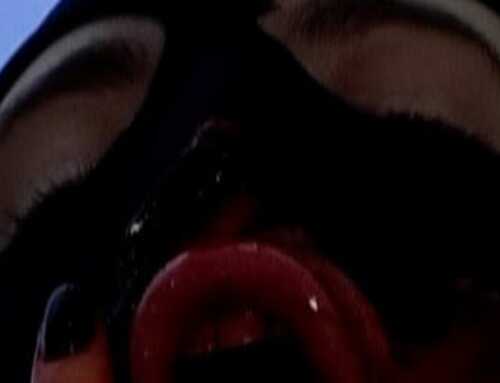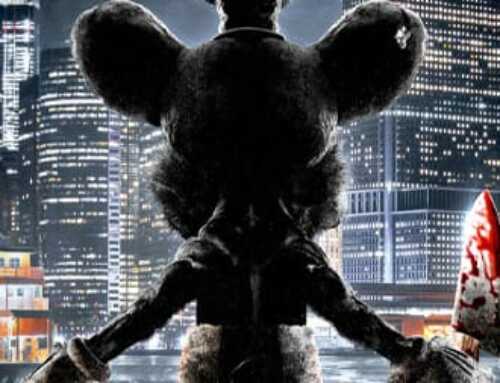No More Time was born during the fall of 2020, when the world confronted the unprecedented challenges posed by the pandemic and societal unrest. Four filmmaking friends– Dalila Droege, Jay Keitel, Mark Reeb, and Jennifer Harlow– felt an urgent need to create a film that expressed their feelings about the state of the country and the world around them.
The film follows a couple who flees a big city in Texas, seeking refuge from a virus outbreak in a small Colorado mountain town. However, the town proves to be far from idyllic, with mysterious disappearances and unsettling characters complicating the couple’s quest for safety.
We spoke to Dalila Droege, the writer, director, and producer of No More Time, about the naturistic inspiration behind the film, challenges and triumphs faced during the short six-week journey from concept to shooting, and her top inspirations when creating this project.
What is your background? How did you get into filmmaking?
I was into writing, art, and music as a kid. My father was a painter, and I saw him living a very solitary life. I chose to go into music because I wanted to work with other people. I ended up as a classical pianist. I loved music, but then I was also by myself in a room practicing for 8 hours a day.
I didn’t grow up with film – we didn’t even own a video camera. My first exposure to film as an art form was when my brother took an Ingmar Bergman class and was bringing back all these VHS tapes of “The Virgin Spring” and “Wild Strawberries.” From then on, I was really interested in making films, but saying I wanted to make films felt like the equivalent of saying I wanted to be an astronaut. I had been a very sheltered homeschooled kid who ended up in classical music, a very isolated kind of profession. Finally, I met an actual classical pianist turned filmmaker, who assured me that my skills in music would translate into film and encouraged me to take my first film class. Once I was making films, it felt like I was finally where I was supposed to be. I was working with and learning from other people, which had always been my goal. And instead of having to focus on a narrow skill set in order to excel, I got to expand and grow in so many directions – working with actors, writing, cinematography, sound design, etc. When I’m directing a project, I really feel like the best and strongest version of myself. Making “No More Time” was by far the most fun I’ve ever had.

Dalila Droege, 2nd from left.
What was the inspiration behind your film No More Time? What are some of the themes and messages you wanted to get across?
In the summer of 2020, we were all in lockdown, debates about covid and mask wearing were exposing all kinds of divisions among neighbors, and the presidential election was looming. On top of all that, the country was in turmoil over the killing of George Floyd and protests across the country were being met with more violence. Around the same time, with the lockdown it felt like the natural world was experiencing a bit of a renewal and healing itself. Animals were
reappearing in urban environments. The air was cleaner. My husband and our friends and I got together and decided to make something that expressed our feelings about what was happening in our country and our world. Our film became an allegory for what we were experiencing. Ultimately, we decided to make a story in which humans have failed for good and nature is taking back the planet.
What was the collaboration process for this project?
My husband, Jay Keitel, and I had worked with Mark Reeb and Jennifer Harlow on several independent films over the years. Mark and Jenn were living in Crested Butte Colorado, having moved there from Austin Texas a few years prior. They called us up in July and basically said, ‘this sucks, let’s make something.’ So we went out there and spent some time in the spectacular natural beauty of Crested Butte and started fleshing out the story. When we first began talking, Mark and Jenn already had locked shooting dates because of a free location, which became the main house in the film. So we had 6 weeks from idea until our first shoot day. Jenn and I created the story (with scene ideas from Mark and Jay), I wrote the script, and Jay created the look of the film and shot it entirely by himself. It’s really crazy impressive what he did alone (and he didn’t even divorce me!).
Did you have any references that you used for inspiration or any filmmakers you admire that inspired your work on No More Time?
We were inspired by “Princess Mononoke” and Michael Haneke’s “Time of the Wolf,” both in terms of story and tone. In “Princess Mononoke,” there’s this debate around what is really true, a conflict between humans who have different versions of what is happening. Nature is an alive presence and a player in that world. “Time of the Wolf” explores what happens in the chaos and confusion of an unexplained global crisis, how society breaks down and transforms. Both films are about the past sins of humans catching up to them in unexpected ways. Jay was also reading the Akira graphic novel series at the time and took inspiration from that. We thought the film should have the visual style of a graphic novel. This inspired our composition and color choices. In post, our colorist Nat Jencks was an amazing resource. He helped us find the final color palette. We had a lot of fun coming up with color choices we hadn’t necessarily seen before. (I kept calling one of our colors “Black Iris” and joking we should copyright it.)
I hear you had a short time to prepare for this project, with only six weeks between the initial concept and shooting. What was your pre-production process like? I wrote the script really quickly, faster than anything I had done before. That was exciting, but also scary. I knew I wasn’t going to be able to prepare this film the way I had other projects in the past. We weren’t going to be able to have everything storyboarded and planned out. Jay helped me by talking with me about a process where we would abandon any idea of perfection, be open to things happening in the moment, and allow the film to evolve as we made it. But it did feel a little like jumping off a cliff. We had no idea if things would come together in time. I was literally finishing the shooting script as we drove into town to start filming the next day. Our first two weeks of shooting, we scheduled a half day of prep/half day of production. We bought an inexpensive camera package, which meant we weren’t beholden to the cost of rental days, so we could be flexible with our shooting schedule.
Any happy accidents on set?
Because of our flexible, “let’s be in the moment” approach, we were able to take advantage of unplanned opportunities. One day when we were driving to a location in the woods, we passed by a herd of hundreds of sheep grazing in the woods. It was such an unusual and magical sight. So we stopped our cars and hopped out with the camera. That ended up being one of our favorite moments in the film.
We also really wanted to hire a trained fox but couldn’t afford it. But then at our location house there happened to be two foxes which would circle the house every morning and afternoon. We kept putting “fox hour” in the schedule until we got a few shots of them. The best was when our drone operator happened to capture one of them running up the road.
On another day, an improv exercise I was trying with the actors ended up becoming the opening to a scene that showed the more playful side of the couple’s relationship, before things start to go haywire.
Crested Butte provided us with a wealth of material, both in terms of the local talent (both Tuck, the Native American spirit, and Gail, the not so friendly neighbor, are local actors) and the unbelievable surroundings. When we started filming, the trees were green, and they turned bright yellow and then red before we finished. That was something we couldn’t have planned for.
What did creating this project teach you?
Making “No More Time” taught me how much is possible with very little time and money. And that sometimes you just have to say yes and jump in and get started, without knowing exactly how everything will go. I think the way that film is taught and the way that films are made are
very different things. The creative process involves much more risk and uncertainty than we are comfortable with a lot of the time. This is especially true when you’re talking about making a film, which is a very expensive endeavor. But I think no matter what the size or budget of the project,
I’ve learned that you have to leave space for discovery and change, in order to make the best version of the thing, and in order to make something that feels alive.
What were the biggest challenges you faced?
There were so many! We shot with the tiniest of crews, during Covid, largely outdoors. Our on set producer Alex Clayton was producing, art-directing, and doing costumes and make-up. Jay shot the film with only one assistant helping him move equipment.
But one thing we really needed to achieve was creating the feeling that nature is a real and powerful character in the film without a huge special effects budget. We found a local drone op (before “No More Time,” he had only ever done drone for real estate and sports videos), and we would go out in the mornings and evenings to film the natural world. He was an avid hiker and knew the best spots to capture what we wanted. Sound also played a crucial role in creating this character. Our sound designer, Mary Ellen Porto, had gone to that area of Colorado for high school and had many fond memories of being outdoors there. She used birdsong and other
sounds native to the area, and she created a really visceral soundscape to back up the visuals. Zak Engel, who composed our score, really ran with my suggestions to go way weird and percussive. The music and sound design work together to create this kind of creeping, omniscient, threatening feeling. And very crucially, we found Neal Jonas, who did our visual effects in his spare time. He created the beautifully drawn animation of the trees blinking their eyes and the final transformation at the end of the film. It is great to hear that audiences really feel this presence of nature as a force in the story, and is it because of all these talented people that we pulled it off.
What do you have coming up next?
I am developing two new feature projects, both with female protagonists in strange subcultures. And I am currently in pre-production on “Beauty Night,” a short film about a young girl who just got her period learning what it means to be a woman from her Mom in a home spa ritual. It’s going further down the path of bizarre comic horror drama. The rules about being female I grew up hearing and believing are truly crazy, and also still lodged in my psyche, and that’s what I’m playing with in this project.




